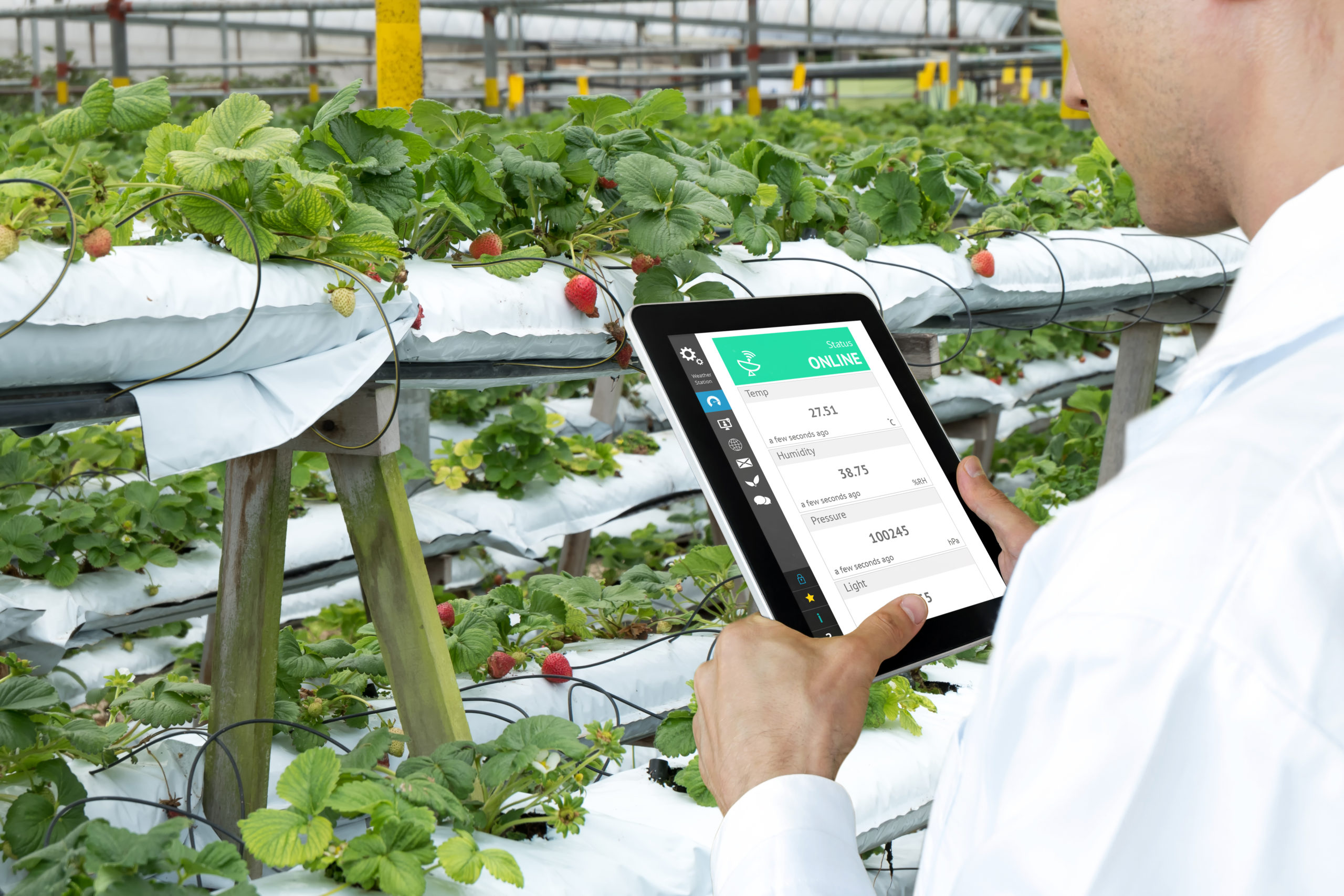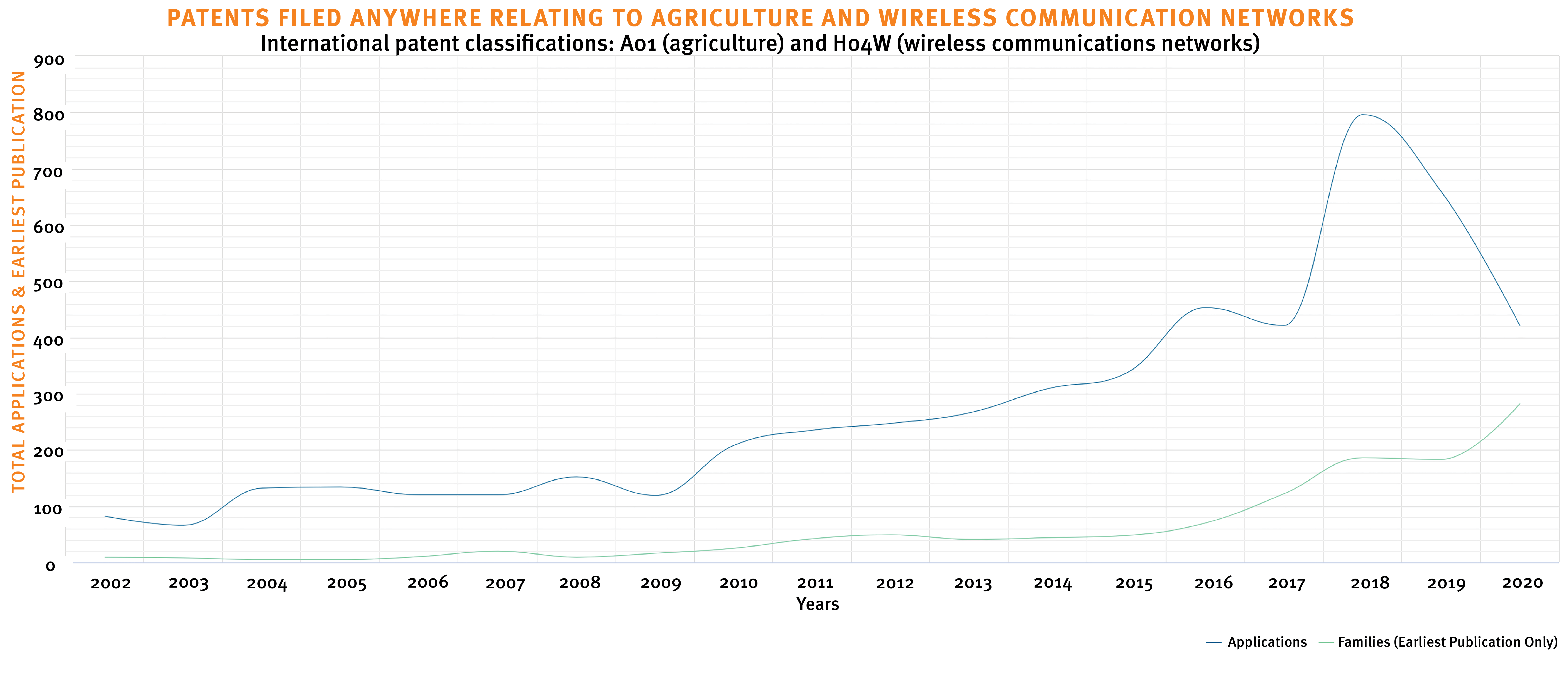
With global population surging and with increasing pressures, both legislative and environmental, brought on by climate change, the agriculture sector has been forced to adapt to a new series of challenges. In recent years, one partial solution, which has risen to prominence, is the use of Internet of Things (IoT) devices in agriculture technology (commonly referred to nowadays as “Agri-tech”). IoT refers to the ability to connect and manage just about any kind of device remotely via the internet, with examples being sensors or heating systems.
The applications of IoT devices in Agri-tech are both numerous and varied. For example, an array of climate sensors can be connected to a central cloud-based computing platform for carrying out data analysis. This enables farmers to account for variations in weather and seasonal conditions and opens the door to unprecedented levels of precision which can maximise crop yields. In another example, irrigation and crop control can be carried out and managed remotely, or even become automated, when combined with IoT sensor technology. Other applications include livestock or soil health monitoring systems, which can further automate farming processes by enabling businesses to manage more land with less labour, which is of particular interest in view of the current farm labour shortages.
The scope and ability of IoT technology to increase yields, while saving time and labour with these data-driven approaches is, evidently, quite significant. This potential of IoT in Agri-tech is reflected in one recent market analysis, which predicts the rise of the global Agri-tech IoT market value from USD 11.4 billion in 2021 to USD 18.1 billion by 2026.
With bigger ponds, however, come bigger fish – bringing more intense competition. An analysis of patent filing trends over the past 20 years indicates that the number of patents filed in the Agri-tech IoT space may be on the rise. The International Patent Classification (IPC) system for classifying the subject matter of patents was revised in 2020 to include a new category (G16Y 10/05) for IoT devices for agriculture applications. However, patents filed before 2020 were not updated to reflect the new code, while many of those filed during 2020 have not yet been published due to the standard 18 month publishing delay from filing. This makes it difficult to obtain precise data on recent trends in Agri-tech IoT patent filing. Nonetheless, a reasonable approximation can be obtained by considering patents classified under both of the broad categories “agriculture” and “wireless communication networks”.
 Figure 1
Figure 1
Protecting a single invention in multiple countries typically involves filing a patent application for the invention in each country, and the resulting applications may be grouped together as a single patent “family”. Considering the number of new patent families published each year can therefore provide a useful indication of the number of new patent applications being filed for new technology. Figure 1 shows the number of patent applications and families published in any jurisdiction with both of these classifications from 2002-2020, using data from a commercial patent database. The number of newly published applications each year is shown by the blue line, while the number of newly published families (i.e., where no application in that family had previously been published) each year is shown in green. It is clear that the number of filings in this area has generally been increasing since around 2009. New patent applications peaked in 2018 and appears to drop back towards the average towards 2020. Closer analysis of the peak in 2018 shows that nearly 300 applications from a single applicant published that year, compared to around 80 in 2019 and even less in 2017 from the same applicant. This could give a false impression of a sector-wide decline in new applications in 2019 and 2020, though in fact the general trend of the number of patent families published for the first time, shown in green, continued to increase in 2020. This indicates that Agri-tech businesses are increasingly allocating more of their budget and attention towards protecting new technology, resulting in more patent families concerning new inventions. These data could also signal an increasing level of competition in the IoT Agri-tech space from applicants seeking to exploit new innovations to secure their share of a growing global market.
Overall, China was found to be the most active jurisdiction – roughly three times as many patent families with both of the above classifications contained applications in China compared to Europe. Similarly, the results also indicated that twice the number of patent families involved filings in the US, the next most active jurisdiction, compared to those containing European applications. A similar trend has also been observed where Chinese patent filings dominate for patent applications classified more generally as agriculture-related. One possible explanation is that European Agri-tech businesses are currently undervaluing the benefits of IP, leading to lower filings in this region. In the above-mentioned market analysis of the sector, technological advances and government support for their adoption were predicted to be “major” growth factors in Europe. We may therefore be observing the opening of a window of opportunity for some European businesses to get ahead of their competition and carve out their market share before increasing levels of technological adoption encourages other European businesses to do the same.
Acting quickly to turn innovations into patent applications can be the difference between patent success and failure, particularly in more competitive sectors. Staying ahead of the filing curve gives your patent applications the best chances of success and increases the likelihood of securing broad protection for your inventions. For start-ups and SMEs, a strong patent portfolio increases attractiveness to investors and facilitates a sound – and often lucrative – exit strategy. Larger and smaller businesses alike can utilise a good portfolio to stifle the competition or as leverage in negotiations. European companies working to adopt IoT in Agri-tech should strongly consider taking a step back to consider whether they can turn their innovations into patents before the competition heats up any further.
If you think you have an idea which might be patentable, or would like to discuss any other IP-related matters you can find my contact details on my web profile here or get in touch with our advanced engineering team via engineering@gje.com.


